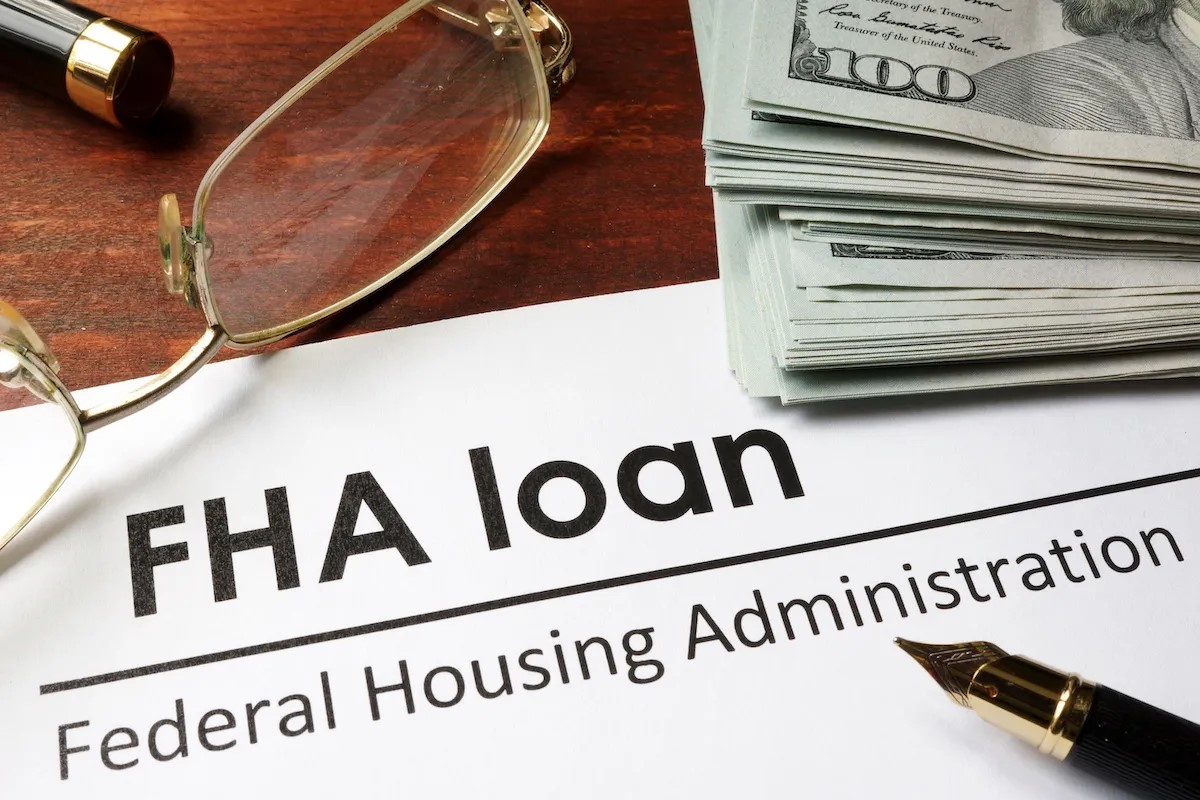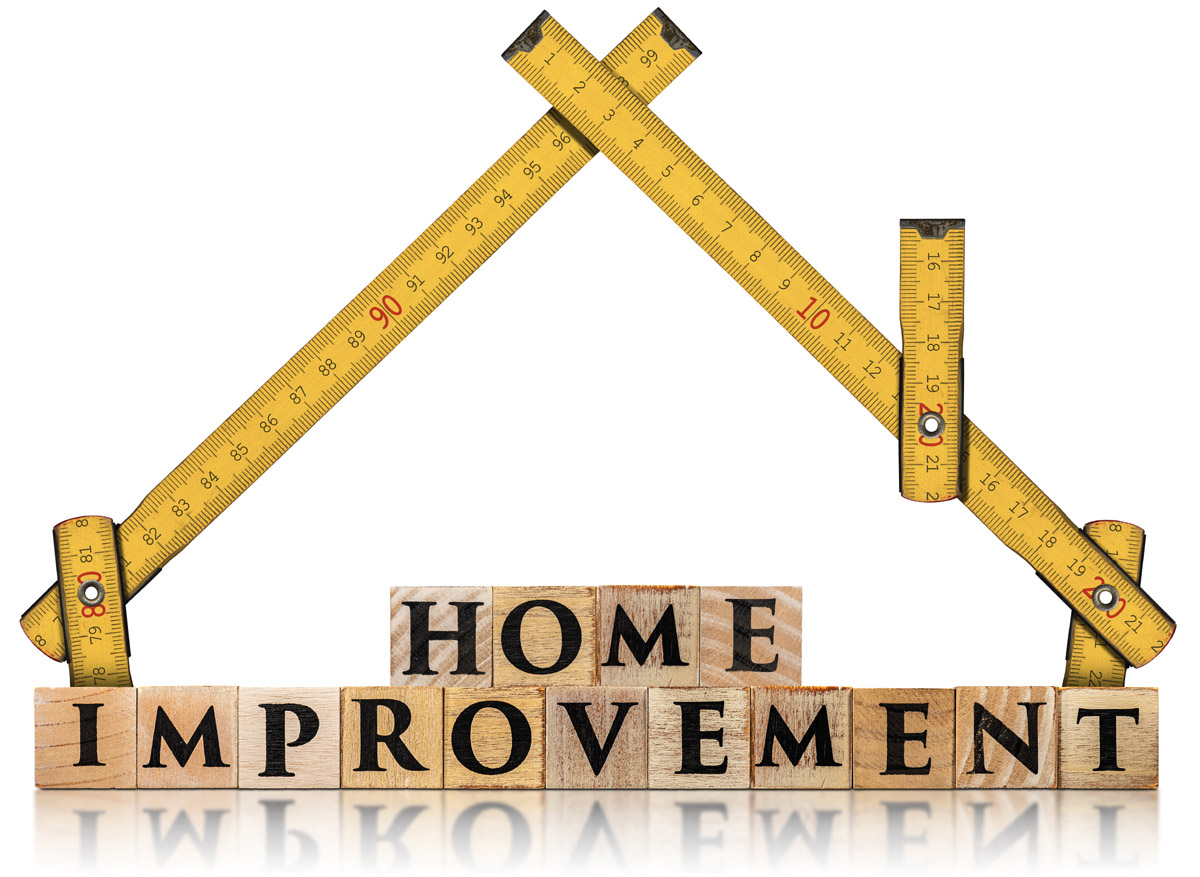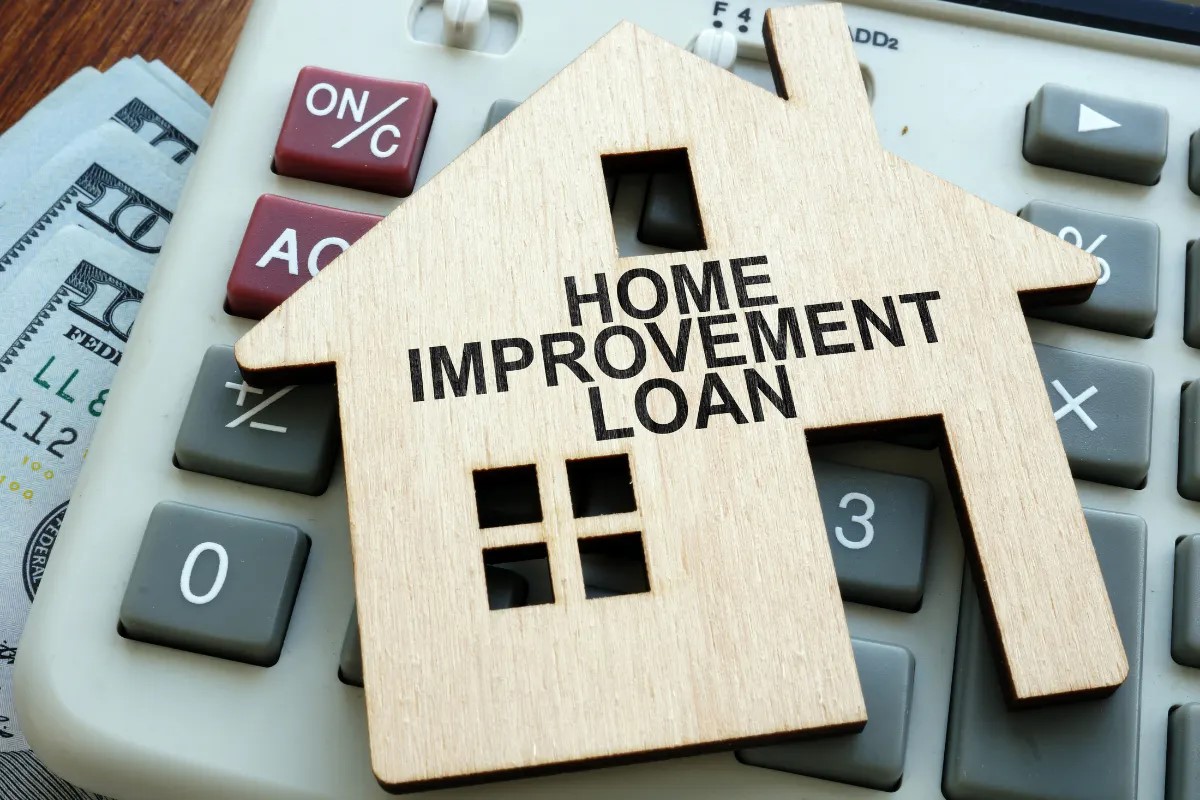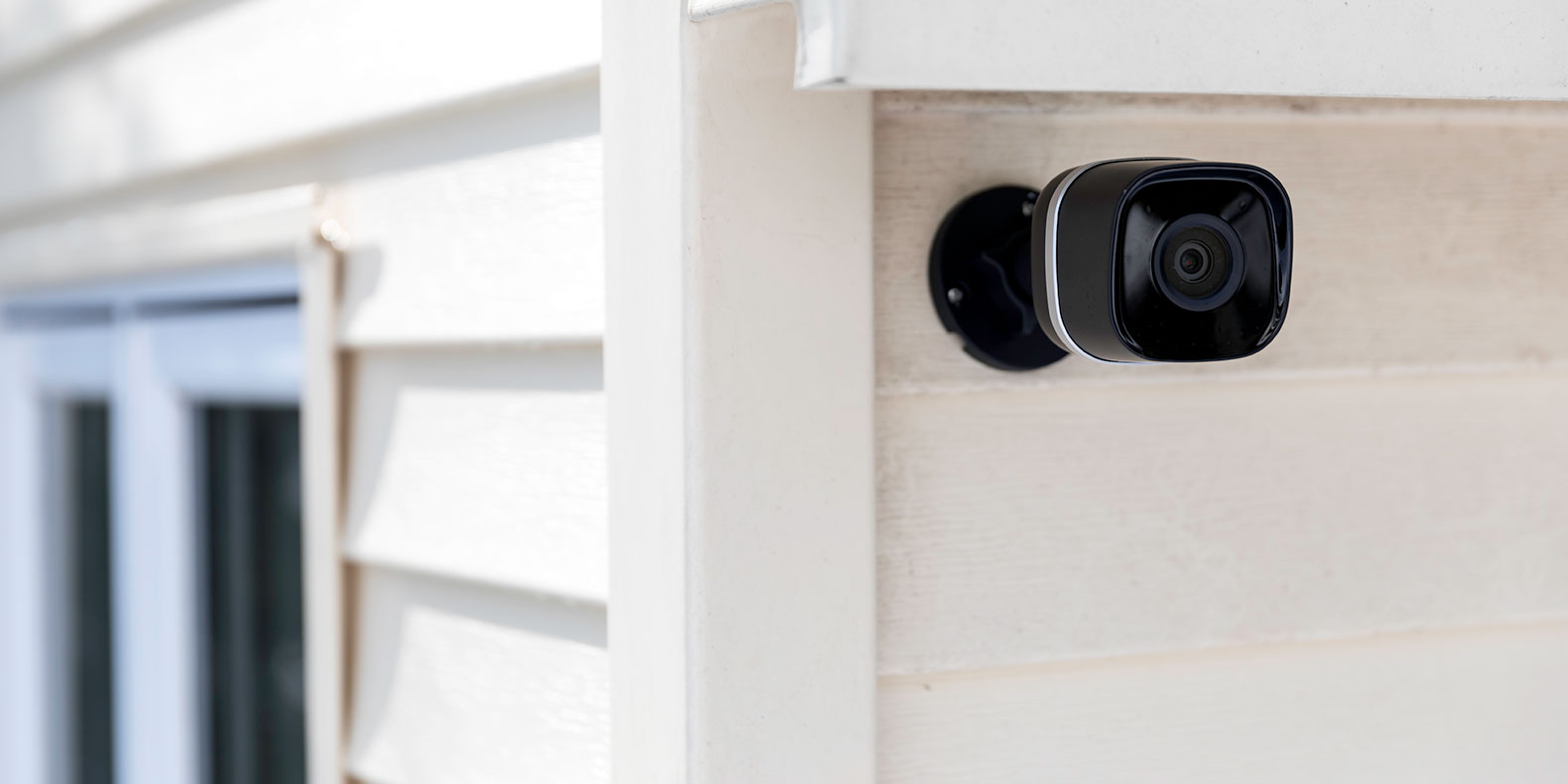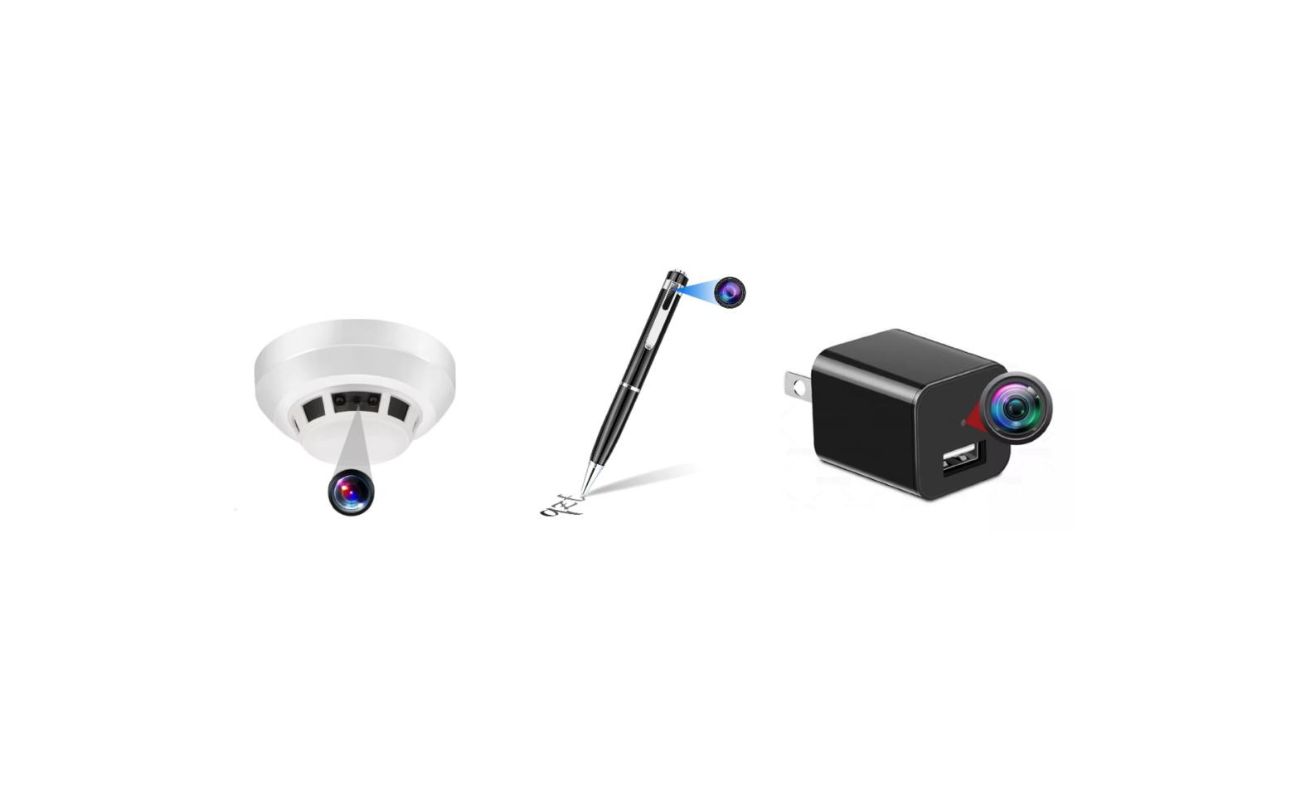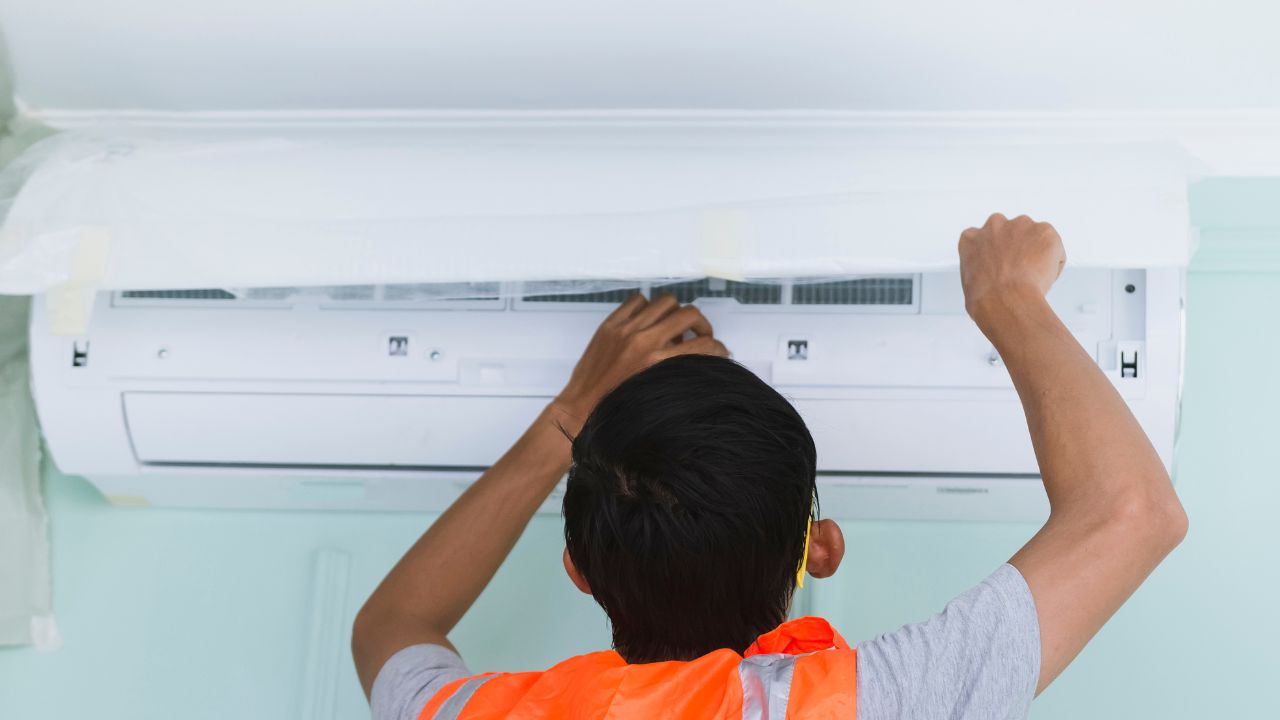Home>Home Maintenance>How To Find The Best Home Repair Loan


Home Maintenance
How To Find The Best Home Repair Loan
Modified: March 6, 2024
Looking for the best home repair loan? Discover expert tips and advice for securing affordable home-maintenance financing today.
(Many of the links in this article redirect to a specific reviewed product. Your purchase of these products through affiliate links helps to generate commission for Storables.com, at no extra cost. Learn more)
Introduction
Keeping your home in good repair is essential for maintaining its value and ensuring a safe and comfortable living environment. However, home repairs can often be costly, especially if you’re facing major repairs or renovations. This is where home repair loans can be a lifesaver.
A home repair loan is a type of loan specifically designed to help homeowners fund repairs, renovations, or improvements in their homes. These loans provide homeowners with the necessary funds upfront, which can be repaid over time through regular monthly installments.
Whether you need to fix a leaky roof, upgrade your electrical system, or remodel your kitchen, finding the best home repair loan that suits your needs can make a significant difference in terms of affordability and convenience.
In this comprehensive guide, we will explore the various types of home repair loans available, the steps involved in securing a loan, and valuable tips to help you find the best loan option for your home repair needs.
Key Takeaways:
- Home repair loans provide upfront funds for essential repairs without requiring collateral. Understanding loan types, comparing lenders, and assessing repair needs are crucial steps in finding the best loan option.
- Researching multiple lenders, checking credit scores, and seeking pre-approval can help homeowners secure favorable terms for their home repair loans. It’s important to budget wisely and make timely payments to protect their financial well-being.
Read more: What Is The Best Loan For Home Improvement
Understanding Home Repair Loans
Before diving into the process of finding the best home repair loan, it’s important to understand the basics of how these loans work. Home repair loans are typically unsecured personal loans that are specifically tailored for funding home repairs or improvements. Unlike home equity loans or lines of credit, home repair loans do not require you to use your home as collateral.
With a home repair loan, you can borrow a specific amount of money from a lender to cover the cost of your home repairs. The loan amount, interest rate, and repayment terms will be determined based on your creditworthiness, income, and the lender’s requirements. Typically, the loan amount can range from a few hundred to several thousand dollars.
These loans can be a great option for homeowners who do not have a significant amount of equity in their homes or do not want to risk losing their homes as collateral. With a home repair loan, you can access the funds you need to make necessary repairs or improvements without tapping into your savings or using high-interest credit cards.
It’s important to note that home repair loans are different from home improvement grants or government assistance programs. While grants and assistance programs may offer free or low-cost funds for specific repairs, they often come with strict eligibility requirements and limited availability.
Home repair loans, on the other hand, are offered by financial institutions such as banks, credit unions, and online lenders. They provide you with the flexibility to choose the contractor or service provider of your choice, and you have control over how the funds are used for your home repairs.
Now that you have a better understanding of home repair loans, let’s explore the different types of loans available to homeowners seeking support for their repair projects.
Types of Home Repair Loans
When it comes to home repair loans, there are several options available for homeowners to consider. Understanding the different types of loans can help you make an informed decision that aligns with your specific repair needs and financial situation.
1. Personal Loans: Personal loans are a popular choice for homeowners looking to fund home repairs. These loans are typically unsecured, meaning they don’t require collateral. You can borrow a fixed amount of money with a fixed interest rate and repayment term. Personal loans offer flexibility in terms of loan amounts and can be used for a wide range of repair projects.
2. Home Improvement Loans: Home improvement loans, also known as home renovation loans, are designed specifically for funding home repairs and improvements. These loans can be secured or unsecured, depending on the lender and your creditworthiness. Home improvement loans often have favorable interest rates and longer repayment terms compared to personal loans.
3. Home Equity Loans: Home equity loans allow you to borrow against the equity you have built in your home. These loans are secured by your home, meaning the lender can seize your property if you fail to repay the loan. Home equity loans are best suited for significant repair projects that require substantial funding. They typically offer lower interest rates and longer repayment terms.
4. Home Equity Lines of Credit (HELOC): HELOCs function similarly to home equity loans but provide a line of credit that you can borrow from as needed. With a HELOC, you have a maximum credit limit, and you can withdraw funds as necessary for your home repairs. HELOCs offer flexibility and can be a good option for ongoing repair or improvement needs.
5. Government Loan Programs: Various government programs, such as the Federal Housing Administration (FHA) Title I Property Improvement Loan Program or the Department of Agriculture’s Rural Repair and Rehabilitation Loans, offer loans specifically for home repairs. These loans often have favorable terms and may be accessible to homeowners who have difficulty qualifying for traditional loans.
It’s important to carefully consider your options and compare the terms and requirements of each loan type. Assess your repair needs, budget, and repayment capabilities to determine which loan option is the best fit for your situation.
Assessing Your Repair Needs
Before embarking on the journey to find the best home repair loan, it’s crucial to assess your repair needs accurately. This involves identifying the repairs or improvements required, determining the scope of work, and estimating the associated costs.
Start by conducting a thorough inspection of your home. Take note of any existing issues or areas that require repairs. This could include problems like a leaking roof, faulty plumbing, electrical issues, or structural damage. Prioritize and categorize these repairs based on urgency and importance.
Once you have identified the repairs, consult with professionals, such as contractors or home repair specialists, to assess the full extent of the work required. They can provide expert advice, estimate the costs involved, and help you understand the scope of the project.
Consider obtaining multiple quotes from different contractors to compare prices and ensure the estimates are reasonable and fair. This will also give you an idea of the overall cost range for your repairs and help you determine the loan amount you need to apply for.
Additionally, it’s important to consider the long-term benefits of the repairs or improvements. Will they increase the value of your home? Enhance energy efficiency? Improve safety? These factors can influence your decision-making and help prioritize which repairs should be addressed first.
By conducting a thorough assessment of your repair needs, you’ll be equipped with the information necessary to find the right home repair loan and allocate the funds appropriately to address your specific repair projects.
Researching Lenders and Loan Options
Once you have assessed your repair needs and have a clear understanding of the costs involved, it’s time to research lenders and loan options. This step is crucial in finding the best home repair loan that suits your requirements and offers favorable terms and rates.
Start by exploring different types of lenders, including banks, credit unions, online lenders, and specialized home repair loan providers. Look for lenders that have experience and a good reputation in providing home repair loans. Reading reviews and testimonials from other borrowers can give you valuable insights into the lender’s reliability and customer service.
Next, consider the specific loan options available from different lenders. Look for loans that align with your needs in terms of loan amount, interest rates, repayment terms, and any additional fees or charges. Some lenders may offer flexible repayment options, such as extended terms or the ability to make extra payments without penalties, which can be advantageous.
Pay attention to the interest rates offered by different lenders, as this will directly affect the overall cost of your loan. Compare the annual percentage rate (APR) rather than just the stated interest rate, as the APR factors in both the interest rate and any additional fees or charges associated with the loan.
Consider the lender’s eligibility requirements as well. Some lenders may have more stringent criteria, making it difficult for borrowers with lower credit scores or limited income to secure a loan. Look for lenders that have flexible eligibility requirements and are willing to work with borrowers in various financial situations.
Another important factor to consider is the loan application process. Look for lenders that offer a streamlined and convenient application process, preferably through an online platform. This can save you time and make the process more efficient.
Once you have gathered information about different lenders and loan options, take the time to compare them side by side. Consider the overall cost of the loan, the terms and conditions, the reputation of the lender, as well as any additional benefits or perks offered.
By thoroughly researching lenders and loan options, you can make an informed decision and choose the best home repair loan that meets your specific needs and financial situation.
Read more: Which Loan Is Best For Home Improvements?
Comparison Shopping
Comparison shopping is a crucial step in finding the best home repair loan. By evaluating different lenders and loan options, you can ensure that you secure the most favorable terms and rates for your specific needs.
Start by creating a list of lenders and loan options that you have researched. This can include traditional banks, credit unions, online lending platforms, and specialized home repair loan providers. Make sure to consider both local and national lenders to explore a wide range of options.
Next, compare the key factors that will influence your loan decision. These factors may include:
- Loan Amount: Determine if the lenders offer the loan amount you need to cover your repair expenses.
- Interest Rate: Compare the interest rates offered by different lenders, and pay attention to whether they are fixed or variable rates.
- Repayment Terms: Evaluate the repayment terms available, including the length of the loan and any flexibility in payment schedules.
- Fees and Charges: Take note of any application fees, origination fees, or other charges associated with the loan.
- Eligibility Requirements: Consider the lender’s criteria for approving loans, including credit score requirements and income qualifications.
- Customer Service: Research the reputation and customer service track record of each lender by reading reviews and testimonials from previous borrowers.
As you compare these factors, keep in mind your own financial situation, needs, and preferences. Remember that finding the best home repair loan isn’t just about getting the lowest interest rate; it’s about finding a loan that aligns with your overall goals and ability to repay.
In addition to comparing the key factors, don’t forget to consider any additional benefits or perks offered by certain lenders. Some lenders may provide borrower rewards programs, flexible repayment options, or discounts for automatic payments. These can add value to your loan and make it more advantageous.
Take your time in comparing lenders and loan options. Gather all the necessary information, review and compare it side by side, and don’t hesitate to reach out to lenders to ask questions and clarify any uncertainties before making your final decision.
By engaging in thorough comparison shopping, you can confidently select the best home repair loan that offers favorable terms, fits your budget, and meets your repair needs.
When looking for a home repair loan, compare interest rates, fees, and repayment terms from multiple lenders to find the best deal for your financial situation.
Loan Application Process
Once you have identified the best home repair loan that meets your needs and preferences, it’s time to begin the loan application process. While the specific process may vary slightly depending on the lender, here are the general steps involved:
1. Gather Required Documentation: Start by gathering the necessary documentation that lenders typically request during the application process. This may include proof of income, identification documents, bank statements, tax returns, and any additional information required by the lender. Having these documents readily available will streamline the application process.
2. Complete the Application Form: Fill out the loan application form provided by the lender. This form will typically require you to provide personal information, employment details, financial information, and the purpose of the loan (in this case, home repairs). Make sure to carefully review and double-check the information before submitting it.
3. Submit the Application: Once the application form is complete, submit it to the lender. Depending on the lender, you may be able to submit the application online, through email, or by visiting a branch in person. Follow the instructions provided by the lender to ensure your application is received.
4. Await Approval Decision: After submitting your application, the lender will review it and assess your eligibility for the loan. This can involve a thorough evaluation of your credit history, income, and overall financial situation. The approval decision can take anywhere from a few days to a few weeks, depending on the lender’s processes.
5. Provide Additional Documentation if Required: During the review process, the lender may request additional documentation or clarification on certain details. Be prepared to provide any requested information promptly to prevent delays in the approval process.
6. Receive Loan Offer: If your application is approved, the lender will provide you with a loan offer that outlines the loan amount, interest rate, repayment terms, and any other conditions or requirements. Take the time to carefully review the offer, including the terms and conditions, to ensure you understand and are comfortable with the agreement.
7. Accept the Loan Offer: Once you have reviewed the loan offer and are satisfied with the terms, inform the lender of your acceptance. This can typically be done by signing and returning the loan agreement or by electronically accepting the offer through the lender’s online platform.
8. Loan Disbursement: After accepting the loan offer, the lender will disburse the funds to you, usually through direct deposit into your bank account. The timing of the disbursement can vary, so be sure to clarify this with the lender. Once you receive the funds, you can use them to start your home repair project.
Throughout the loan application process, it’s important to stay in communication with the lender and promptly provide any requested information. This will help expedite the process and ensure a smooth and efficient experience.
Now that you understand the loan application process, it’s essential to be aware of what happens after loan approval and how repayments are handled.
Loan Approval and Disbursement
Once your home repair loan application has been approved, you’re one step closer to getting the funds you need to proceed with your repair project. The loan approval and disbursement process involves a few key steps:
1. Review Loan Agreement: After receiving the loan offer from the lender, carefully review the loan agreement. Pay close attention to the loan amount, interest rate, repayment terms, any applicable fees or charges, and any specific conditions outlined in the agreement. It’s essential to understand the terms fully before proceeding.
2. Accept Loan Agreement: Once you have reviewed the loan agreement and are satisfied with the terms, indicate your acceptance. This can typically be done by signing and returning the agreement or by accepting the offer electronically through the lender’s online platform. By accepting the agreement, you demonstrate your commitment to the loan and agree to adhere to the terms outlined.
3. Await Loan Disbursement: After accepting the loan agreement, the lender will initiate the disbursement process. This involves transferring the loan funds to your designated bank account. The timing of the disbursement can vary depending on the lender and other factors. Some lenders may disburse the funds within a few business days, while others may take longer. Be sure to clarify the expected timeframe with the lender.
4. Utilize the Funds for Repairs: Once the loan funds have been disbursed to your bank account, you can use the funds to pay for your home repair project. This can include hiring contractors, purchasing materials, or covering any other associated costs. It’s important to use the funds responsibly and in accordance with your repair plans to ensure that the loan serves its intended purpose.
5. Begin Repayment: Following the disbursement of the loan funds, repayment of the loan will begin according to the terms outlined in the loan agreement. This typically involves making regular monthly payments over the specified repayment period. It’s important to budget accordingly and ensure that you make timely payments to avoid any penalties or negative impacts on your credit.
6. Keep in Communication with the Lender: Throughout the repayment period, it’s crucial to maintain open communication with the lender. If you encounter any difficulties or financial challenges that may hinder your ability to make payments, reach out to the lender as soon as possible. They may be able to provide assistance or suggest alternative solutions to help you manage your loan obligations.
By understanding the loan approval and disbursement process, you can effectively navigate this stage of securing a home repair loan. Remember to stay organized, keep track of loan-related documents, and fulfill your repayment obligations to take full advantage of the loan benefits.
Now that you’re familiar with the loan approval and disbursement process, let’s explore the repayment terms and options available for home repair loans.
Repayment Terms and Options
When it comes to repaying your home repair loan, it’s important to understand the repayment terms and options available to you. These factors will impact the overall cost of the loan and the timeframe within which you’ll need to fulfill your repayment obligations. Here are some key considerations:
1. Repayment Period: The repayment period refers to the length of time you have to repay the loan in full. This can range from a few months to several years, depending on the loan terms and the lender’s policies. Typically, shorter repayment periods result in higher monthly payments, but lower overall interest costs.
2. Interest Rates: The interest rate is the additional amount you will pay on top of the loan principal as a cost for borrowing the money. Interest rates can be fixed, meaning they remain the same throughout the loan term, or variable, meaning they can fluctuate based on market conditions. It’s important to understand the interest rate structure and how it will impact your monthly payments and overall repayment amount.
3. Monthly Payments: Your monthly payments will depend on the loan amount, interest rate, and repayment period. The lender will calculate the amount you need to pay each month to repay the loan on time. Ensure that you factor in these monthly payments into your budget to ensure consistent and timely repayment.
4. Prepayment and Early Repayment Options: Some lenders may offer prepayment or early repayment options, which allow you to pay off the loan before the scheduled term ends. This can be advantageous if you have the means to pay off the loan early, as it can help you save on overall interest costs. However, it’s important to check with the lender if any prepayment penalties or fees apply.
5. Automatic Payments: Many lenders provide the option to set up automatic payments for your loan. This can be a convenient and hassle-free way to ensure that your monthly payments are made on time. Consider enrolling in automatic payments to avoid any potential late payment fees and to ensure that your loan is repaid according to the agreed-upon terms.
6. Loan Modification Options: In certain circumstances where you may face financial hardship, you can explore loan modification options with your lender. This may involve adjusting the repayment terms or seeking temporary payment relief. It’s important to proactively communicate with your lender if you encounter any difficulties in making your loan payments.
Understanding the repayment terms and options will help you effectively manage your home repair loan and ensure that you can fulfill your repayment obligations without undue financial strain. It’s essential to budget accordingly and make timely payments to maintain a positive credit history and protect your financial well-being.
Now that we have covered the repayment terms and options, let’s explore some tips to help you find the best home repair loan for your specific needs.
Read more: How To Qualify For Home Improvement Loan
Tips for Finding the Best Home Repair Loan
When searching for the best home repair loan, it’s important to approach the process strategically to ensure that you secure a loan that meets your needs and offers favorable terms. Here are some helpful tips to consider:
1. Research Multiple Lenders: Take the time to research and compare multiple lenders to find the best options available. Look beyond traditional banks and explore online lenders, credit unions, and specialized home repair loan providers. By gathering information and quotes from various lenders, you can find the most competitive rates and terms.
2. Check Credit Scores and Reports: Before applying for a home repair loan, check your credit scores and review your credit reports. Good credit can increase your chances of securing a loan with favorable terms. If your credit score is low, take steps to improve it before applying. Correct any errors on your credit report to ensure accuracy.
3. Determine Loan Amount and Repayment Capacity: Assess your repair needs and determine the loan amount required. It’s important to borrow only what you need, considering your ability to repay based on your income and existing financial obligations. Create a budget to determine the monthly payment you can comfortably afford.
4. Seek Pre-Approval: Consider seeking pre-approval for a home repair loan. This involves providing basic information to lenders to obtain an estimate of the loan amount you may qualify for and an indication of the interest rate and repayment terms. Pre-approval can help guide your search and give you a stronger negotiating position.
5. Compare Interest Rates and Fees: Compare the interest rates, APRs, and any additional fees or charges associated with the loans you’re considering. A slightly lower interest rate or lower fees can significantly impact the overall cost of the loan. Remember to look beyond the stated interest rate and consider the APR, which reflects the total cost of borrowing.
6. Read and Understand the Loan Terms: Thoroughly read and understand the loan terms and conditions before committing. Pay attention to details such as repayment period, early repayment options, prepayment penalties, and any other specific terms. Clarify any doubts or questions you may have by reaching out to the lender.
7. Consider Loan Flexibility: Look for lenders that offer flexible repayment options or the ability to customize the loan terms to better suit your needs. This can include options for making extra payments or adjusting the repayment period if necessary. Flexibility can ensure that the loan aligns with your financial goals and circumstances.
8. Seek Recommendations and Reviews: Ask for recommendations from friends, family, or professionals in the home repair industry who have experience with home repair loans. Additionally, read customer reviews and testimonials online to get insights into other borrowers’ experiences with particular lenders.
9. Beware of Scams: Be cautious of lenders or loan offers that seem too good to be true. Watch out for high-pressure sales tactics or lenders asking for upfront fees. Always ensure that you are dealing with reputable lenders and verify their credentials before providing any personal or financial information.
10. Seek Professional Advice: If you’re unsure about the loan process or need help navigating the options, consider seeking advice from a financial advisor or a housing counselor. They can provide personalized guidance and help you make informed decisions.
By following these tips, you can enhance your chances of finding the best home repair loan that fits your needs, budget, and financial goals.
Now that you’re equipped with these tips, you can confidently embark on your journey to secure a home repair loan that will help you tackle those necessary repairs and improvements.
Conclusion
Securing a home repair loan is an effective way to fund necessary repairs or improvements in your home. It allows you to access the funds you need upfront, which can be repaid over time through manageable monthly installments. By following the steps outlined in this guide and considering the tips provided, you can find the best home repair loan that meets your specific needs and offers favorable terms.
Start by understanding the different types of home repair loans available and assessing your repair needs. Thoroughly research lenders and loan options, comparing interest rates, repayment terms, and eligibility requirements. Engage in comparison shopping to ensure you select the loan that aligns with your budget and financial goals.
Once you have identified the right loan, complete the application process, review and accept the loan agreement, and await the loan disbursement. Keep in mind the repayment terms and options available to you, ensuring you make your monthly payments on time to avoid any penalties or negative impacts on your credit.
Throughout the process, don’t hesitate to seek professional advice, ask questions, and clarify any uncertainties. By taking a proactive and informed approach, you can navigate the loan process with confidence.
Remember, finding the best home repair loan is about more than just getting the lowest interest rate. It’s about finding a loan that fits your needs, budget, and repayment capabilities. Consider the long-term benefits of the repairs or improvements and prioritize your projects accordingly.
Now that you’re equipped with knowledge and strategies, it’s time to take action and find the best home repair loan that will help you enhance the value, comfort, and safety of your home. Good luck on your home repair journey!
Frequently Asked Questions about How To Find The Best Home Repair Loan
Was this page helpful?
At Storables.com, we guarantee accurate and reliable information. Our content, validated by Expert Board Contributors, is crafted following stringent Editorial Policies. We're committed to providing you with well-researched, expert-backed insights for all your informational needs.

